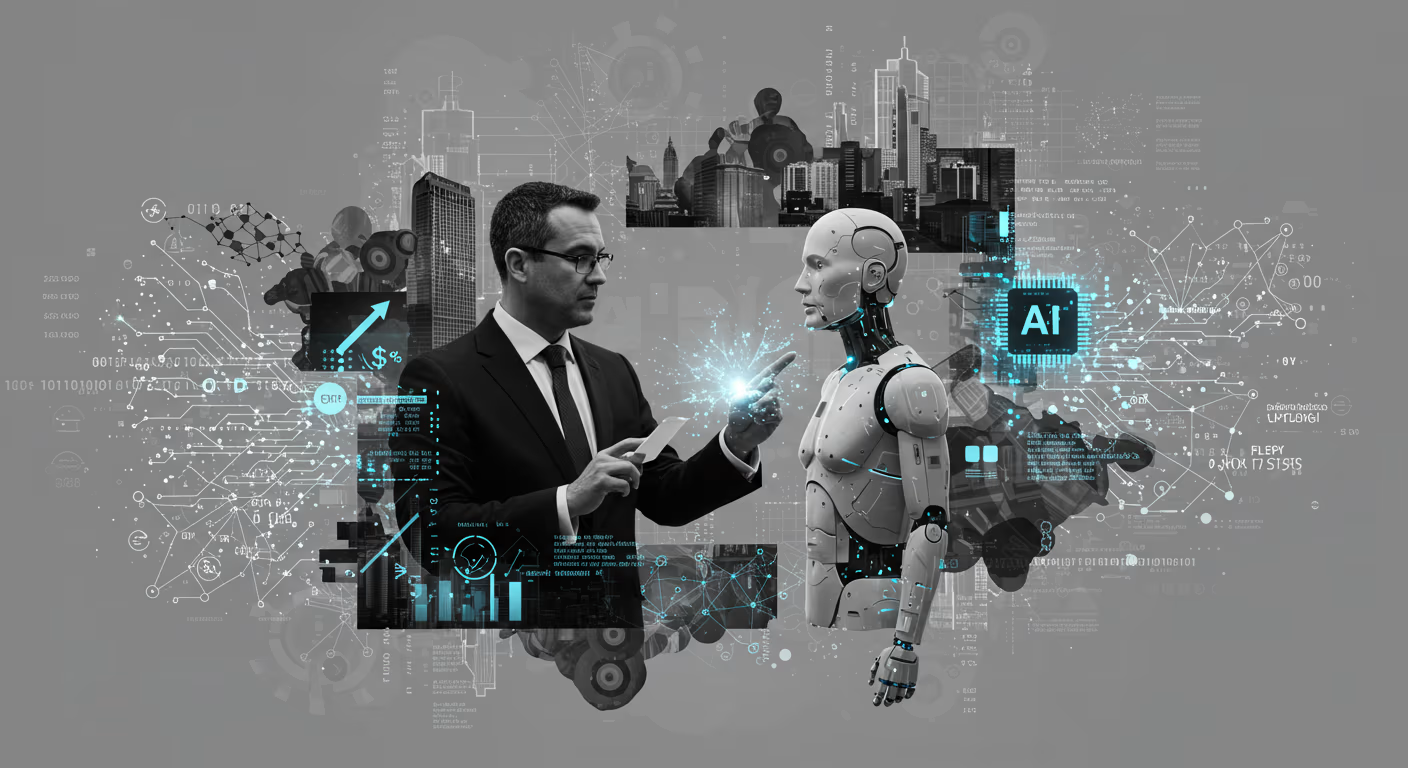As generative AI continues to evolve, Wall Street is quickly becoming one of its most enthusiastic adopters. From coding and client services to data analytics and decision-making, major financial institutions are integrating AI at every level to gain a competitive edge. While some are still experimenting, others are rapidly transforming internal operations, aiming to redefine how modern banking works.
This article explores how top banks — including JPMorgan Chase, Citi, Goldman Sachs, Morgan Stanley, and Bank of America — are harnessing AI to streamline operations, boost productivity, and future-proof their business models. We also examine the challenges they face, including cybersecurity threats and cultural shifts required for full AI integration.
The AI Arms Race on Wall Street
Generative AI exploded into public consciousness with the launch of ChatGPT in late 2022. Since then, financial giants have been racing to integrate the technology across every facet of their organizations. Whether it’s helping junior analysts generate reports, optimizing code for developers, or creating smarter investment tools, AI is redefining the DNA of banking operations.
According to consulting firm ThoughtLinks, AI is expected to impact up to 44% of all banking jobs by 2030. But it’s not just about replacing tasks — it’s also about enhancing productivity, unlocking new capabilities, and transforming workplace culture. This evolution is ushering in a new era where banks are not just adopters of AI — they are becoming builders, innovators, and evangelists.
JPMorgan Chase: Investing $18 Billion Into AI Transformation
JPMorgan Chase, the largest U.S. bank, is setting the pace with an annual $18 billion technology budget, a substantial portion of which is dedicated to artificial intelligence.
CEO Jamie Dimon is personally engaged in the AI revolution, regularly using the firm’s internal generative AI tools. In 2023, the bank introduced a proprietary AI platform — essentially a “copilot” for its private bankers — and has since scaled it to more than 200,000 employees across the firm.
The goal? To reimagine workflows across departments — from software developers to asset managers — and create nearly 100 AI tools to automate repetitive tasks, generate insights, and enhance decision-making. During JPMorgan’s recent Investor Day, executives revealed how AI is becoming an engine of innovation and operational efficiency.
Mary Erdoes, who leads JPMorgan’s asset and wealth management division, has been vocal about using AI to eliminate “no joy” work — the mundane, time-consuming tasks that slow productivity.
Lori Beer, the bank’s Global CIO, is heading a specialized team of technologists tasked with building out the next generation of AI-powered tools.
Citi: A Strategic Overhaul With AI at the Center
Citigroup is undergoing a bold tech transformation under CEO Jane Fraser, and AI plays a central role in that vision. The company recently appointed a new set of technology and strategy leaders to fast-track the integration of AI across its global operations.
One of the key hires, Shadman Zafar, outlined Citi’s four-phased AI strategy, which aims to completely reshape how the company works over the coming decades. The phases span from early experimentation to enterprise-wide automation, ultimately aiming to improve productivity, streamline customer experiences, and enhance risk management.
To build a stronger future, Citi has also recruited AI leadership from rivals like Morgan Stanley to revamp underperforming segments — particularly its wealth management division.
From automating back-office functions to deploying AI in client advisory services, Citi’s approach is one of comprehensive transformation.
Goldman Sachs: Redefining Roles With AI Sidekicks
Goldman Sachs has entered what some insiders call its “AI era.” From C-level executives to junior analysts, employees are using AI tools daily to assist in everything from document creation to client strategy.
In some cases, AI is doing up to 95% of the work on complex tasks, such as drafting IPO prospectuses. According to CEO David Solomon, this shift is not only increasing internal productivity but also helping Goldman better serve clients in fast-evolving sectors like AI-driven tech and M&A.
Goldman’s data operations, led by Chief Data Officer Neema Raphael, are the backbone of this transformation. Raphael oversees a 500-person team working to ensure that AI applications are rooted in solid, well-governed data. Their focus is on quality over quantity — ensuring that every AI model is trained on accurate and compliant information.
Meanwhile, CIO Marco Argenti believes that cultural transformation will be the next major hurdle for AI adoption. For Goldman to truly realize the benefits of AI, he argues, employees must adapt their mindsets and learn to collaborate effectively with AI tools.
Morgan Stanley: Turning Employee Ideas Into AI Innovations
Morgan Stanley is focusing on turning grassroots innovation into enterprise-scale change. The bank currently has over 30 AI projects in development, many of which are based on suggestions from frontline employees.
A major area of focus is wealth management, where nearly 100% of advisor teams now use AI tools to manage portfolios, anticipate client needs, and reduce administrative workloads. The goal, according to bank leadership, is to free up human advisors to do what they do best — build relationships.
Thanks to a partnership with OpenAI, Morgan Stanley is pushing boundaries by leveraging tools like ChatGPT to accelerate idea generation, market research, and financial modeling.
The bank’s new Head of Innovation, recently appointed to oversee all tech partnerships, is building a roadmap for more OpenAI-style collaborations, ensuring that Morgan Stanley stays at the cutting edge of AI development.
Bank of America: Empowering Employees With AI Assistants
At Bank of America, AI is being used to enhance internal efficiency, especially in client-facing roles. Rob Pascal, the bank’s Chief Experience Officer, has championed an AI assistant that helps bankers collect, process, and summarize client data before meetings.
This assistant, which integrates seamlessly with internal databases and communication tools, allows employees to spend less time preparing and more time engaging meaningfully with clients.
Rather than replacing jobs, the assistant acts as a productivity booster — one that’s helping Bank of America stay agile in a rapidly changing financial landscape.
The Road Ahead: Opportunities and Challenges
While the benefits of AI adoption are clear — faster processing, smarter decisions, and lower operational costs — challenges remain. A growing concern among bank executives is the rise of AI-powered cyberattacks. As banks deploy increasingly complex AI systems, they become more attractive targets for hackers who also use AI to exploit vulnerabilities.
Even OpenAI CEO Sam Altman has warned that defensive technologies must evolve quickly to keep pace with offensive AI capabilities. Financial institutions are now investing heavily in AI-powered security tools and hiring more cybersecurity experts with experience in adversarial machine learning.
Another major challenge is ethical deployment. How do banks ensure that their AI models are fair, transparent, and free from bias? As regulations around AI usage tighten globally, compliance and explainability will become crucial components of AI strategy.
Lastly, there’s the issue of employee retraining and cultural adaptation. Many traditional roles are evolving, and financial professionals will need to reskill to work alongside AI systems effectively. Leading banks are already investing in internal training programs to prepare their workforce for this future.
A New Era for Banking
Generative AI is not just a passing trend — it’s a foundational shift in how financial institutions operate. Wall Street’s biggest banks are investing billions to harness the power of AI, not only to increase profits but to reshape how banking itself works.
From JPMorgan’s tech arsenal to Citi’s strategic reboot, Goldman’s cultural evolution, Morgan Stanley’s collaborative innovation, and Bank of America’s practical deployments, one thing is clear: the future of banking is intelligent, adaptive, and AI-powered.
As AI continues to advance, the banks that succeed will be those that blend technology, talent, and trust — and do so faster than the competition.





